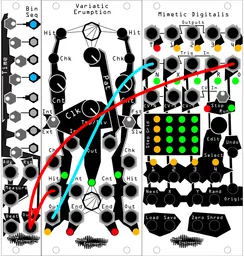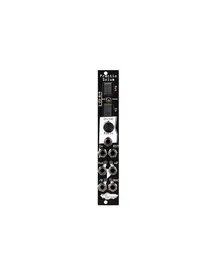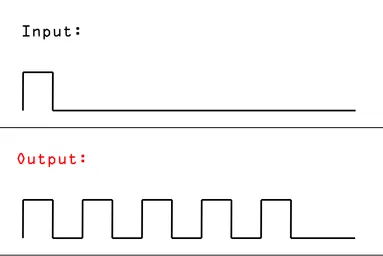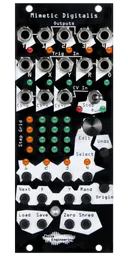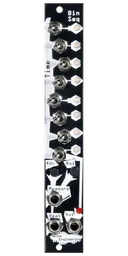Welcome back to Getting Started, the series where we explore fundamental Eurorack modules and concepts. Today, we’ll be exploring burst generators, a fun sequencing utility that can bring your patches to life in interesting ways. Burst generators are one of my personal favorite types of modules, as they’re somewhat unique to Eurorack, and always make patches more lively.
How does a burst generator work?
In the simplest terms, a burst generator takes a single trigger in, and outputs a bunch of triggers. Most burst generators will have a trigger input, a trigger output, a rate control, and a length control. The rate control changes how fast the triggers are output, and the length control changes how many triggers are output.

Some burst generators have additional parameters that can adjust the pattern of triggers they output either by changing timing or adding rhythms to the trigger pattern. Some also have CV control of their rate and count parameters, which is a great way to make sequences even more varied with external modulation, and some can sync to external clocks, too.
How to use a burst generator in a patch
I love using burst generators in my percussion patches to add glitchy bursts at infrequent intervals. Triggering a burst with a /64 division of the main clock, for instance, is a great way to make complex events happen with regularity, without using any sequencers.
You can also use random or probabilistically-generated triggers to fire off bursts, adding complex semi-random events to your patch. (And there’ll be more on probability in a future post in this series!)
Here’s an example of one of my favorite patches: a simple drum loop is sequenced with a trigger sequencer, and infrequent bursts from a burst generator triggered by a random trigger source are mixed in to keep things fresh and interesting.
Using sequencers with burst generators
Burst generators can also be used to control other sequencers, creating even more complex events that involve CV, too. I like to use a small pitch sequencer along with a burst generator to create arpeggios each time the burst is triggered. The CV sequencer can be kept in phase by multing the event trigger to both the burst generator’s trigger input and the sequencer’s reset input.

For advanced patchers: trigger mixing
I often use burst generators alongside regular trigger sequencers to make my drum patterns more interesting. Of course, to trigger something with multiple streams of triggers, some sort of mixer is needed: pretty much any DC-coupled mixer will work, but an OR gate is a great solution if you use this sort of technique often – plus, OR gate modules are often inexpensive and passive! Mult your sequencer and your burst generator into an OR gate, patch the output to your trigger destination, and say hello to fun and funky sequencing.
